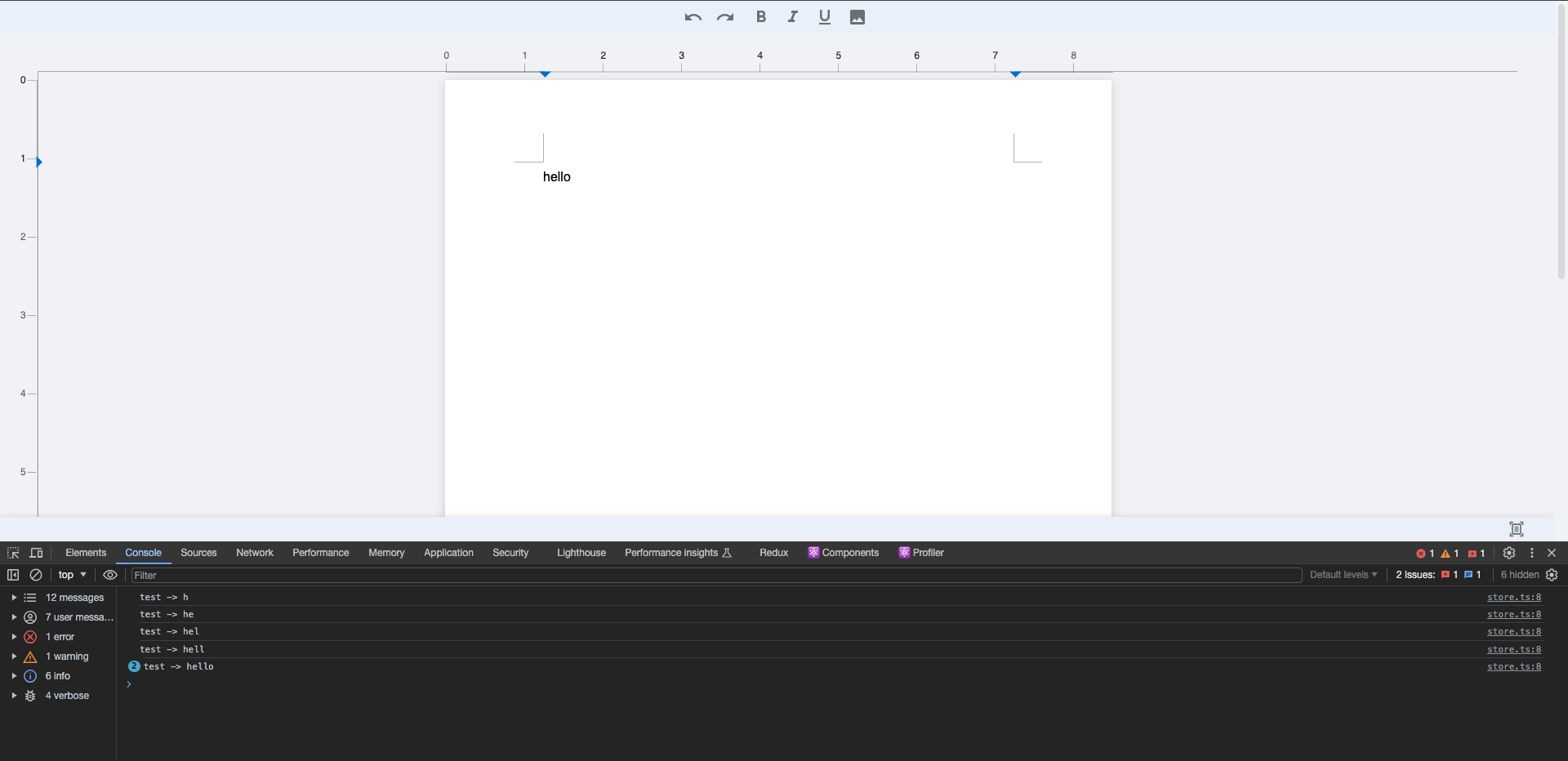How to use DOM events
Mastering the handling of DOM events is crucial for effective React development. Below are key events and how to use them:
Retrieving Page Value
on_change: This event triggers when the value of an input page changes.
Angular Component
export class AppComponent {
handleChange(data) {
console.log('test ->', data);
}
}<DocumentEditor (on_change)="handleChange($event)" </DocumentEditor>Web Component for React
function App() {
const editorRef = useRef(null);
// Convert object to string because Web Components expect string attributes
const toolBarItems = JSON.stringify({
bold: true,
italic: true,
underline: true,
image: false,
undo: true,
redo: true,
});
useEffect(() => {
const editor = editorRef.current;
if (editor) {
const handleChange = event => {
console.log('Content changed:', event.detail);
};
// Attach custom event listeners
editor.addEventListener('on_change', handleChange);
return () => {
editor.removeEventListener('on_change', handleChange);
};
}
}, []);
return (
<div className="App">
<web-doc
ref={editorRef}
value="Hello world"
toolbar={toolBarItems}
toolbar_class="toolbar_class"
canvas_class="canvas_class"
></web-doc>
</div>
);
}Web Component for JavaScript
<!-- In you html file add following code in a body tag where you want to use react canvas editor -->
<body>
<web-doc
id="editor"
value="Hello Web Component!"
toolbar="${toolbarJson}"
toolbar_class="${toolbarClassJson}"
></web-doc>
<script type="module" src="/main.js"></script>
</body>
;// In main.js file(i.e. used as a script in html file) add the following code
import '@angular/compiler'; // Ensure this is installed
import '@mindfiredigital/angular-canvas-editor';
// Define toolbar items
const toolBarItems = {
bold: true,
italic: true,
underline: true,
image: false,
undo: true,
redo: true,
};
// Define toolbar class styles
const toolbar_class = {
item: {
bold: {
'background-color': 'red',
color: 'white',
},
selectedToolbarItemColor: {
color: 'white',
},
},
};
setTimeout(() => {
const editor = document.getElementById('editor');
editor.setAttribute('toolbar', JSON.stringify(toolBarItems));
editor.setAttribute('toolbar_class', JSON.stringify(toolbar_class));
if (editor) {
editor.addEventListener('on_change', event => {
console.log('Content changed:', event.detail);
});
editor.addEventListener('on_select', event => {
console.log('Content selected:', event.detail);
});
}
}, 0);
Capturing Selected Text
on_select: This event activates when text on the page is selected.
Angular Component
export class AppComponent {
handleSelect(data) {
console.log('test ->', data);
}
}
<DocumentEditor (on_select)="handleSelect($event)" </DocumentEditor>
Web Component for React
const handleSelectedText = text => {
console.log(text);
};
DocumentEditorWebComponent({ on_select: handleSelectedText });
export const App = () => <div id="document-editor"></div>;Web Component for JavaScript
<!-- In you html file add following code in a body tag where you want to use react canvas editor -->
<body>
<div id="document-editor"></div>
<script type="module" src="/main.js"></script>
</body>
;// In main.js file(i.e. used as a script in html file) add the following code
const handleSelectedText = text => {
console.log(text);
};
DocumentEditorWebComponent({ on_select: handleSelectedText });

Setting Page Value
value: To assign a value to an input page, use the value attribute.
React Component
export const App = () => {
return <DocumentEditor value="Hello world" />;
};Web Component for React
DocumentEditorWebComponent({ value='Hello world' });
export const App = () => <div id='document-editor'></div>;Web Component for JavaScript
<!-- In you html file add following code in a body tag where you want to use react canvas editor -->
<body>
<div id="document-editor"></div>
<script type="module" src="/main.js"></script>
</body>
;// In main.js file(i.e. used as a script in html file) add the following code
DocumentEditorWebComponent({ value='Hello world' });

By following these steps, you can proficiently work with DOM events in React, enhancing your application's functionality.